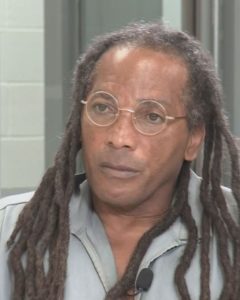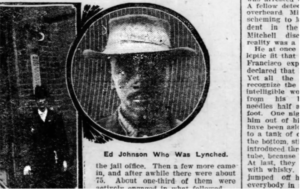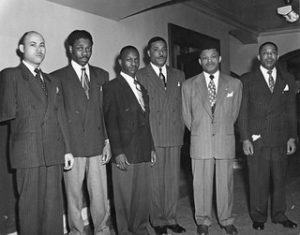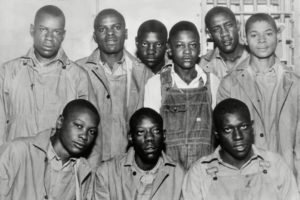Combating Racism – Criminal Injustice – White Jury Bias
“In our courts, when it’s a White man’s word against a Black man’s, the White man always wins.”
To Kill a Mockingbird by Harper Lee
The Sixth Amendment to the U.S. Constitution establishes the right of a defendant charged with a crime to a trial by an impartial jury. But the history of our criminal justice system is filled with cases where this promise of jury impartiality has not been fulfilled. The composition of juries actually affects trial outcomes and the rules we have in place for selecting juries impact those outcomes.
Research suggests that juries made up of all-White members are more likely to convict Black defendants at higher rates than White defendants. A Duke University-led study of a decade of criminal convictions in Florida, for example, found that all-White jury pools convicted Black defendants 16% more often than White defendants.
“I think this is the first strong and convincing evidence that the racial composition of the jury pool actually has a major effect on trial outcomes,” said senior author Patrick Bayer, chairman of Duke’s Economics Department.
A study posted in the Quarterly Journal of Economics found that in the absence of Blacks in the jury pool, “Blacks are substantially more likely to be convicted.” In addition, the study found that “. . . trials with all-White jury pools result in higher conviction rates for Black defendants and lower conviction rates for Whites relative to jury pools with at least one Black potential juror.”
Between the 1870’s and 1960’s, a significant number of Black defendant/ White victim allegations never made it to trial. The Tuskegee Institute Archive estimates approximately 3,500 lynching deaths of Blacks. How many of the lynched were actually innocent will forever be a mystery.
Below are the stories of just a few innocent Black men convicted by all-White juries.
Kevin Strickland

In 1978, Kevin Strickland was convicted of three murders by an all-White jury even though no physical evidence linked him to the crime scene, family members provided alibis and the admitted killers said he was not at the crime scene. According to an article in The Washington Post, the case was built on the testimony of the sole survivor and eyewitness, who attempted multiple times to recant her testimony because she said she was pressured by police. When the police took Strickland to the police station for questioning, he had no idea that he was being considered for the triple murder. The actual killers, who weren’t arrested until two months later, reported feeling safe because the police had “picked up the wrong man.” But they insisted that Strickland was not with them.
Strickland’s original trial, which included one Black juror, ended in a hung jury. At his second trial, the all-White jury found him guilty. When the actual killers were convicted, they each received 20-year sentences. Strickland has spent 43 years in prison and just this past Tuesday was finally exonerated.
Ed Johnson

Johnson was arrested for allegedly sexually assaulting a White female in Chattanooga, Tennessee, in 1906. The victim was allegedly knocked unconscious with a leather strap. Johnson became a suspect when a witness claimed that he saw him carrying a leather strap, though Johnson denied owning one. Johnson provided numerous alibi witnesses at trial. Nevertheless, he was convicted by an all-White jury and sentenced to death. The U.S. Supreme Court, intervening for the first time in a state criminal case, granted a stay of execution. Nevertheless, a mob broke through the jail and brutally murdered Johnson in a public hanging. Johnson’s tombstone reflects his final words, professing his innocence, “God Bless you all. I AM a Innocent Man.” In February 2000, his conviction was finally posthumously overturned.
Arthur Ellington, Henry Shields, and Ed Brown

In 1934, after a White farmer, Raymond Stuart, was killed in Mississippi, three Black sharecroppers were arrested for the crime. The three were all beaten and tortured into confessing. The police did not dispute torturing the defendants, who appeared visibly in pain as they sat through their trial. An all-White jury convicted the three and sentenced them to death by hanging. In 1936, the U.S. Supreme Court unanimously overturned the convictions in the case of Brown v. Mississippi, ruling that coerced confessions cannot be admitted into evidence in a court of law as they violate the due process clause of the Fourteenth Amendment. This historic ruling paved the way for the Miranda rulings to come decades later. Ellington, Shields and Brown were never fully exonerated because they took short plea deals for fear of facing another unjust re-trial.
Clarence Lee Brandley

In August, 1980, two custodians at Conroe High School in Conroe, Texas, found the body of 16-year-old Cheryl Dee Ferguson in a loft above the school auditorium. She had been raped and strangled. In a case of egregious police and prosecutorial misconduct, of these custodians, Clarence Brandley, was framed for the crime. Texas Ranger Wesley Styles led the police investigation. Addressing the two custodians he said, “One of you is going to hang for this.” Turning to Brandley he added, “Since you’re the nigger, you’re elected.” Brandley was the only Black out of the five school custodians. There was no physical evidence linking Brandley to the crime and semen recovered from Ferguson was inexplicably destroyed. Blood on the victim’s blouse was not a match to Brandley’s blood type. Brandley went to trial in December 1980 before an all-White jury. When one White juror felt there was insufficient evidence to establish guilt, the judge ruled a mistrial. In a second trial before an all-White jury, Brandley was convicted and sentenced to death. In October, 1987, the Court of Criminal Appeals granted Brandley a new trial in light of new evidence, including information about the real killer. In October, 1990 the charges against Brandley were dropped.
The Trenton Six

Wrongful convictions based on racial bias were not just a Southern phenomenon. In 1948, six Black men known as “The Trenton 6” were arrested for the killing of an elderly White furniture store owner in Trenton, New Jersey. Witness descriptions of the assailants ranged from “two to three Black men” to “two to four light-skinned teenagers.” The six Black men who were arrested did not match the descriptions. Five of the Trenton 6 signed inconsistent confessions, which they maintained at trial were coerced. All provided rock-solid alibis. Nonetheless, an all-White jury convicted the Trenton 6 and sentenced them to death. On appeal, their convictions were overturned due to weak evidence and the perjury of the medical examiner. After multiple re-trials, four of the Trenton 6 were acquitted, and two were found guilty of lesser sentences.
Scottsboro Boys

The case of the “Scottsboro Boys” raised public awareness about racial injustice and galvanized the Civil Rights Movement. In March 1931, a fight occurred between Black and White boys on a freight train traveling through the town of Scottsboro, Alabama.
Haywood Patterson, Olen Montgomery, Clarence Norris, Willie Roberson, Andy Wright, Ozzie Powell, Eugene Williams, Charley Weems and Roy Wright were searching for work when a racially-charged fight broke out between passengers. The police rounded up all Black boys riding on the train and ultimately arrested nine Black boys, ranging in ages from 12 to 19 years old. Two White girls who were faced with charges of vagrancy and illegal sexual activity came forward and falsely accused the Scottsboro boys of having gang raped them on the train. All nine defendants claimed innocence. After four separate one-day trials with all-White juries, eight of the nine were convicted and sentenced to death.
After this initial verdict, protests emerged in the north, leading the U.S. Supreme Court to overturn the convictions in 1932 on the grounds that the young men did not have adequate legal representation. A series of retrials and reconvictions followed until protests of unfair and unequal court proceedings led to two 1935 groundbreaking Supreme Court decisions on jury diversification. In Norris v. State of Alabama, the Court unanimously reversed the conviction of Clarence Norris on the grounds that the systematic exclusion of Blacks from jury service violated the Equal Protection Clause of the Fourteenth Amendment. In the case of Patterson v. State of Alabama (1935), the Supreme Court ruled that a Black defendant is denied due process rights if the jury pool excludes Blacks.
The appeals of the Scottsboro Boys would last over 20 years. On re-trial, one of the rape victims testified that the rape was fabricated, yet all-White juries again returned guilty verdicts. In the end, after facing multiple re-trials, all of the Scottsboro boys had their convictions dropped or were sentenced to lesser charges. The Alabama Legislature recently introduced a bill to posthumously exonerate the nine Scottsboro Boys.
CONCLUSION
These cases, and many others, showcase decades of racial bias in the criminal justice system. Because media reports and public outrage expose only the most prominent wrongful convictions, we will never know how many innocent Black Americans were falsely convicted or executed. My next newsletter will reveal some recommendations to eliminate these injustices.